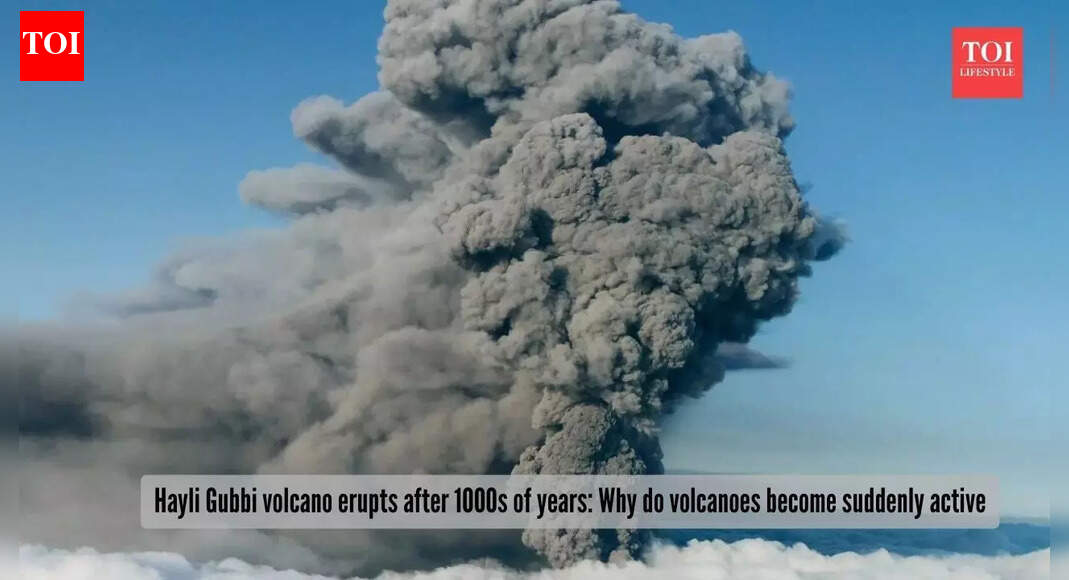After lying silent for nearly 12,000 years, Ethiopia’s Hayli Gubbi volcano came to life on Sunday with a powerful explosion that sent ash plumes soaring about 14 kilometers into the atmosphere.
The volcano located in the remote Afar region near the Eritrean border sent shockwaves across the world after the dormant volcano erupted after thousands of years. The massive clouds of ash drifted across several countries, including Yemen, Oman, India, and northern Pakistan, affecting air quality and causing concern over potential flight disruptions.
Ash Cloud From Ethiopia Hits India’s Airspace At High Speed, DGCA Issues Urgent Safety Advisory
The eruption, which lasted several hours, occurred in the East African Rift Valley, a geological region known for its shifting tectonic plates and frequent seismic activity.
Hayli Gubbi volcano erupts after 1000s of years Why do volcanoes become suddenly active (Photo: ANI)
This event is extraordinary because the Hayli Gubbi volcano has shown no confirmed eruptions in over twelve millennia. According to the Smithsonian Institution’s Global Volcanism Program, it remained dormant throughout the Holocene epoch which began approximately 1200 years ago, making its sudden awakening rare and scientifically valuable. But how did this dormant volcano suddenly become active and burst into lava after so many years?
What is a dormant volcano A dormant volcano is a one that has not erupted for a very long time but still has the potential to become active again.
It’s different from an extinct volcano, which is considered dead and likely has negligible chances to erupt in the future. Dormant volcanoes can stay quiet for thousands of years, with absolutely no signs of activity, but deep beneath the surface, molten rock or magma may still be present, and when the right conditions are met, like movement of tectonic plates or pres
Read More

